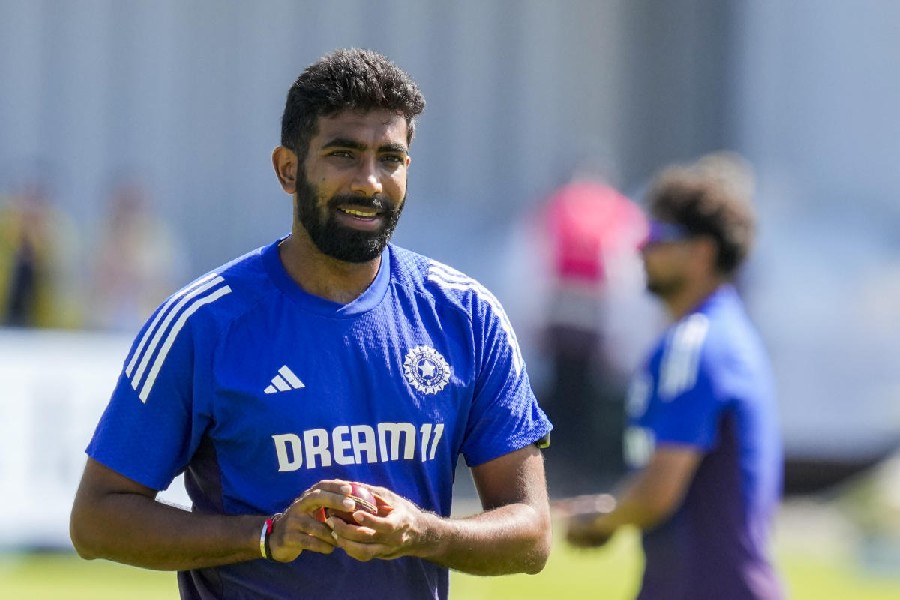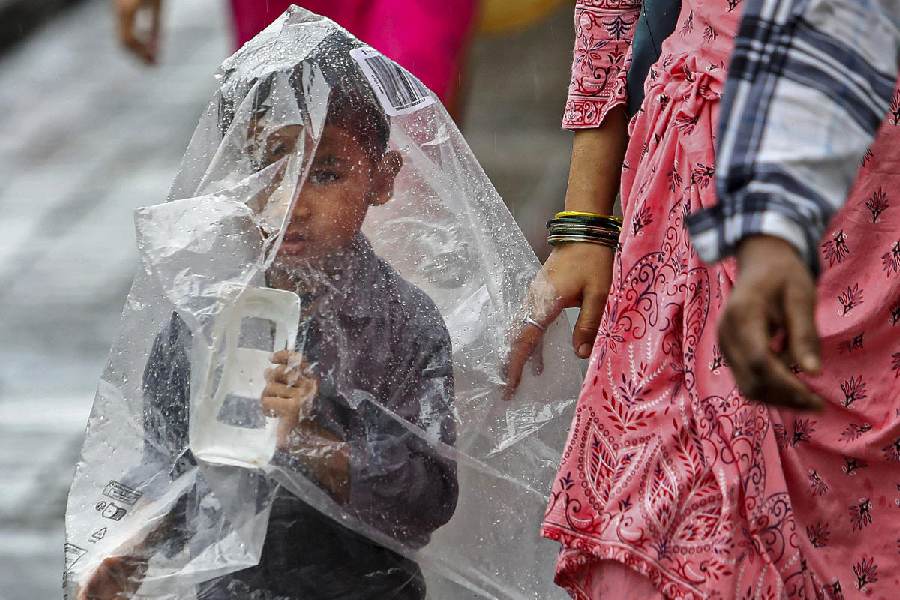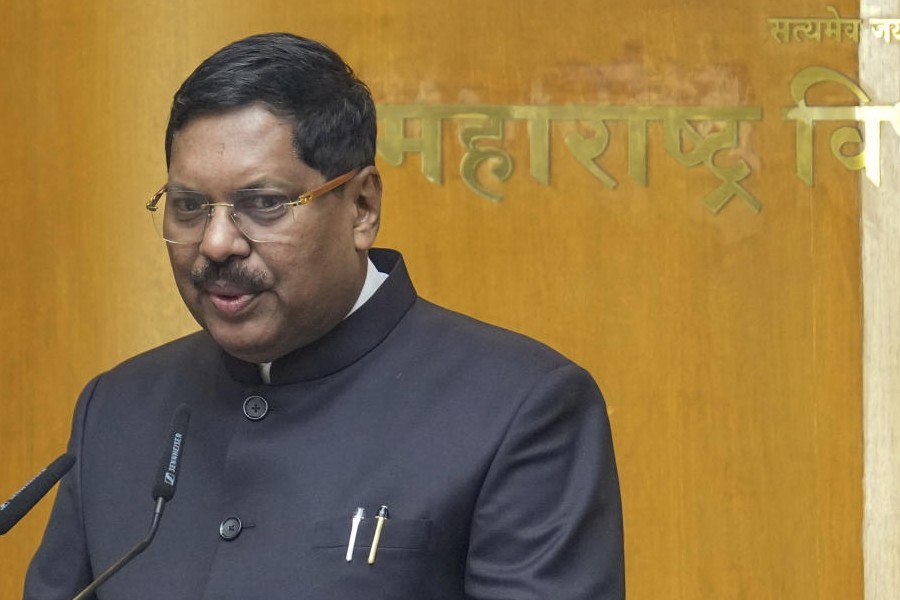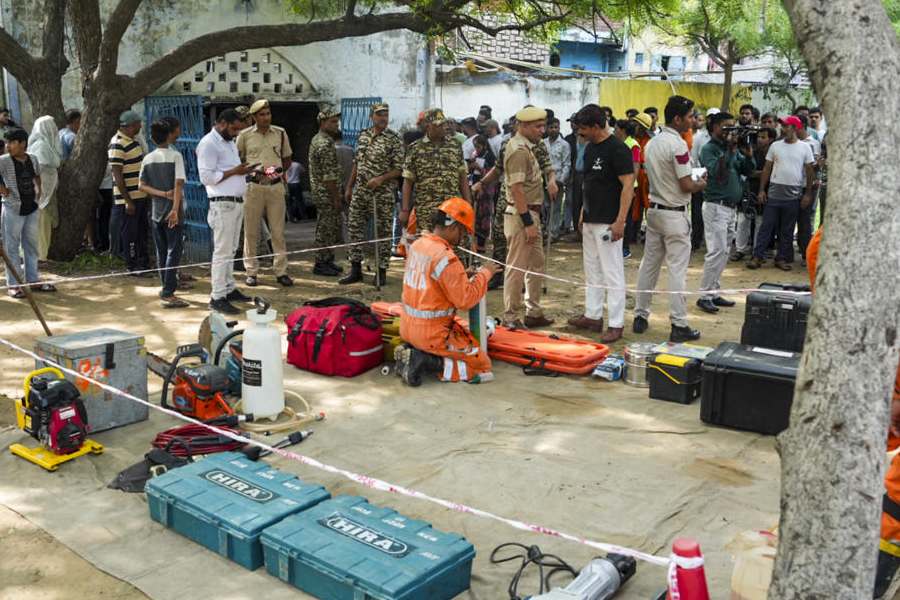 |
| BARRACKPORE, NOT BONDI: Surfing veteran Antony Colas (left) and fellow Frenchman Gaetan Sene ride a tidal bore in the Hooghly, around 300 metres away from the Dhobi Ghat jetty in Barrackpore. Picture by Sanat Kr Sinha |
The river had started to swell, as it does twice a day around full moon.
The jetty at Barrackpore’s Dhobi Ghat had been shut for 15 minutes to let the baan (bore tide) pass but passengers waiting to catch a ferry didn’t seem to mind the interruption because of the unusual sideshow that was keeping them occupied.
The centre of the buzz, and some bemused glances, was a bare-bodied “sahib” in blue trunks who had arrived at the jetty 45 minutes earlier, holding an air pump and an inflatable surfboard. With him were two other men, one of them a Hugh Jackman lookalike, Wolverine sideburns and all.
Nobody seemed to have a clue what Frenchmen Gaetan Sene and Antony Colas and Briton Steve Hunt were planning to do on that Wednesday three weeks ago until Sene, 37, got busy pumping air into his surfboard. “Ki pholachhe eita (What is that thing he is inflating)?” a schoolboy standing nearby asked his friend. “Nouko-r moton lagchhe (Looks like a boat),” the kid replied.
Driver Satrughan Sahu, 26, went a few steps closer, still wondering what the “sahibs” were up to.
 |
Would they attempt a dangerous swim across the river during baan? Were they here to look for something in the water? Would they try to get to the other side on those “funny looking boats”?
As speculation raged, the trio took position a few metres from one another along the Hooghly, ready to hit the water.
“Ei Neel Pant, shabdhane (Mr Blue Trunks, be careful),” shouted a face in the crowd. “Na re, kicchu hobe na. Era eishob-e kore (Nothing will happen, they do this all the time),” interjected a young man who seemed to have solved the puzzle.
At 12.40pm came what Sene, Colas and Hunt had been waiting for: the distant roar of a tidal bore advancing towards them. Cue for the crowd to rise like the swell of a wave.
The three men had by then swum 300 metres away from the jetty and stood on their surfboards with knees bent, allowing the growing current to carry them forward.
Hunt was unlucky as the giant wave broke near him, making him tumble. Ditto Colas, though he was able to recover, get back on his board and ride the wave before stopping 50 metres from the jetty.
Sene, the least experienced of the three, got what surfers call the “clear of the wave” and enjoyed what he would later describe as an “adrenaline-pumping fast and smooth ride” for almost 300 metres.
“Shabash! Neel Pant ke dekh ki kore jacche (Wow! Look at the man in blue trunks),” Satrughan screamed seconds before Sene and Colas sealed the triumph with a high-five.
Debarpita Ray Gupta, a first-year student at Surendranath College in Barrackpore, couldn’t believe what she had seen. “This is the stuff of National Geographic and Discovery,” said Debarpita, who had come to the riverbank with friends.
 |
Hunt, a 49-year-old railway engineer from Gloucestershire in England and record holder for the longest surf on a tidal bore, said he had never seen “a faster bore” than the one he had just missed. “I have been riding tidal bores across the world for 33 years and this one’s been the fastest. Tidal bores in the Amazon are higher and rougher, though.”
Colas, 45, said a recce of a possible vantage points a day or two in advance was “extremely important” for tidal-bore surfing. “My friend in Calcutta, Samir Prasad of Marina Infra Projects, arranged for us to visit different ghats along the riverbank and choose our spot.”
The trio had tested the tidal bore at different spots before choosing Dhobi Ghat, which provides the longest stretch.
According to fluid mechanics expert Kaustuv Debnath, the speed of a tidal bore tends to increase where the breadth of the river narrows.
“Tidal bores happen twice a day during high tide around the full and new moon, when the earth and moon are aligned with the sun. It happens mainly due to the gravitational pull of the moon and the sun. The bore is generated in the sea and its effect is felt in the rivers that lead to it. The sea closest to the moon at a particular time would generate the strongest bores,” said Debnath, a researcher in river engineering at the Indian Institute of Engineering Science and Technology.
Hunt and Colas have been chasing tidal bores around the world for decades, at times individually and sometimes together. They fund their own trips for the sake of “adrenaline pumping thrill of riding ahead of a rough wave”.
For Sene, a rower, the tidal-bore challenge was his first. Not only did “Neel Pant” ride the wave with aplomb, he was the only one to do it fully.
Beginner’s luck, some might say, but the crowd had found its hero for the day.
Do you think the Hooghly can be promoted as a surfing destination? Tell ttmetro@abpmail.com











